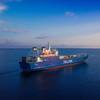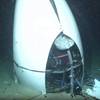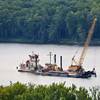BWM Convention Modification Enter into Force
The amendments to an international treaty aimed at preventing the spread of potentially invasive species in ships’ ballast water came into force yesterday (October 13), the International Maritime Organization (IMO) said.
Ships regularly take on sea water, in tanks, to ensure their stability. Known as ballast water, this can contain many aquatic species, including in microscopic or larval form. These can become invasive and harmful if the ballast water is released, unmanaged, in a new location at the end of an ocean voyage.
The International Convention for the Control and Management of Ships' Ballast Water and Sediments, 2004 (the BWM Convention) was adopted by IMO, a specialized agency of the United Nations, to address this problem.
The BWM Convention entered into force in 2017. The amendments formalize an implementation schedule to ensure ships manage their ballast water to meet a specified standard aimed at ensuring that viable organisms are not released into new sea areas, and make mandatory the Code for Approval of Ballast Water Management Systems, which sets out how ballast water management systems used to achieve the D-2 standard have to be assessed and approved.
This will help ensure that aquatic organisms and pathogens are removed or rendered harmless before the ballast water is released into a new location – and avoid the spread of invasive species as well as potentially harmful pathogens.
The amendments to the BWM Convention were adopted in April 2018. In essence, the schedule for implementation means that compliance with the D-2 standard set out in the Convention will be phased-in over time for individual ships, up to 8 September 2024. Over time, more and more ships will be compliant with the D-2 standard.
In many cases, meeting the D-2 standard will be achieved through fitting ballast water management systems. There are now many such approved systems on the market, ranging from those which use physical methods such as ultraviolet light to treat the ballast water, to those using active substances (chemicals). Those that use active substances have to go through a thorough additional approval process.











